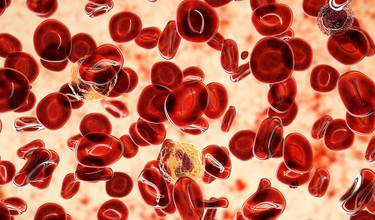What is Polycythemia Vera (PV)?
Polycythemia vera (PV) is a rare blood disorder that causes the bone marrow to produce too many red blood cells. This can lead to an increased risk of blood clots, which can cause serious health problems such as stroke, heart attack, or pulmonary embolism.
Symptoms of PV
The symptoms of PV can vary from person to person and may not appear until the condition is advanced. The most common symptoms of PV include:
-
Fatigue and weakness, due to the thickening of the blood caused by excess red blood cells
-
Headaches and dizziness
-
Blurred or double vision
-
Itching, particularly after taking a warm bath or shower
-
Redness, swelling, and warmth in the hands and feet
-
Joint pain
-
High blood pressure
Causes and risk factors of PV
PV is a result of a genetic mutation that affects the bone marrow, causing it to produce too many red blood cells. The exact cause of the genetic mutation is unknown, but it is believed to be a spontaneous occurrence, rather than an inherited condition. However, some cases of PV have been reported in families, indicating that there may be a genetic component involved.
While the exact cause of PV is unknown, there are several risk factors associated with the development of the condition. These risk factors include:
-
Age: PV is more common in people over the age of 60.
-
Gender: PV is slightly more common in men than in women.
-
Smoking: Smoking has been linked to an increased risk of PV.
-
Exposure to radiation: Exposure to high levels of radiation, such as from radiation therapy, can increase the risk of PV.
-
Family history: While most cases of PV are not inherited, having a family member with PV or another blood disorder may increase the risk of developing the condition.
-
Other blood disorders: Having another blood disorder, such as essential thrombocythemia or myelofibrosis, may increase the risk of PV.
Diagnosis and Treatment of PV
PV is typically diagnosed through a series of tests and examinations, which may include blood tests to measure the number of red blood cells and a bone marrow biopsy to determine if the bone marrow is producing too many blood cells. Additionally, diagnosis of PV can involve genetic testing to identify mutations in the JAK2 gene, as well as imaging tests.
As there is currently no cure for PV the treatment of PV aims to reduce the risk of complications, such as blood clots, while also improving symptoms and quality of life. Treatment options include phlebotomies, and medication to reduce the number of red blood cells (e.g. Hydroxyurea and Interferon alfa), the risk of blood clots (e.g. aspirin) and to reduce itching (e.g. Antihistamines). Lifestyle changes, such as quitting smoking, maintaining a healthy weight, and staying physically active, may also help reduce the risk of complications and improve overall health. In rare cases, a bone marrow transplant may be recommended for people with severe PV. In late-stage PV, treatment may involve low-dose radiation therapy to decrease the size of the enlarged spleen or liver.
Join our Clinical Trial
If you or a loved one is living with Polycythemia Vera and would like to contribute to ongoing research and explore alternative treatment options, consider participating in our clinical trial. Learn more about our research study for adults with Polycythemia Vera here. By joining our trial, you can help advance our understanding of this condition and potentially improve the lives of those affected.
Summary
In summary, PV is a rare blood disorder that results in the overproduction of red blood cells in the bone marrow. This can lead to the thickening of the blood and an increased risk of blood clots, which can cause serious complications such as stroke or heart attack. PV can cause a range of symptoms, including fatigue, joint pain, and itching. Diagnosis of PV involves blood tests, bone marrow biopsy, genetic testing, and imaging tests. Treatment options include phlebotomy, medication, radiation therapy, bone marrow transplant, and lifestyle changes. Close monitoring and regular follow-up appointments are important to ensure effective treatment and to identify any potential complications early on.


